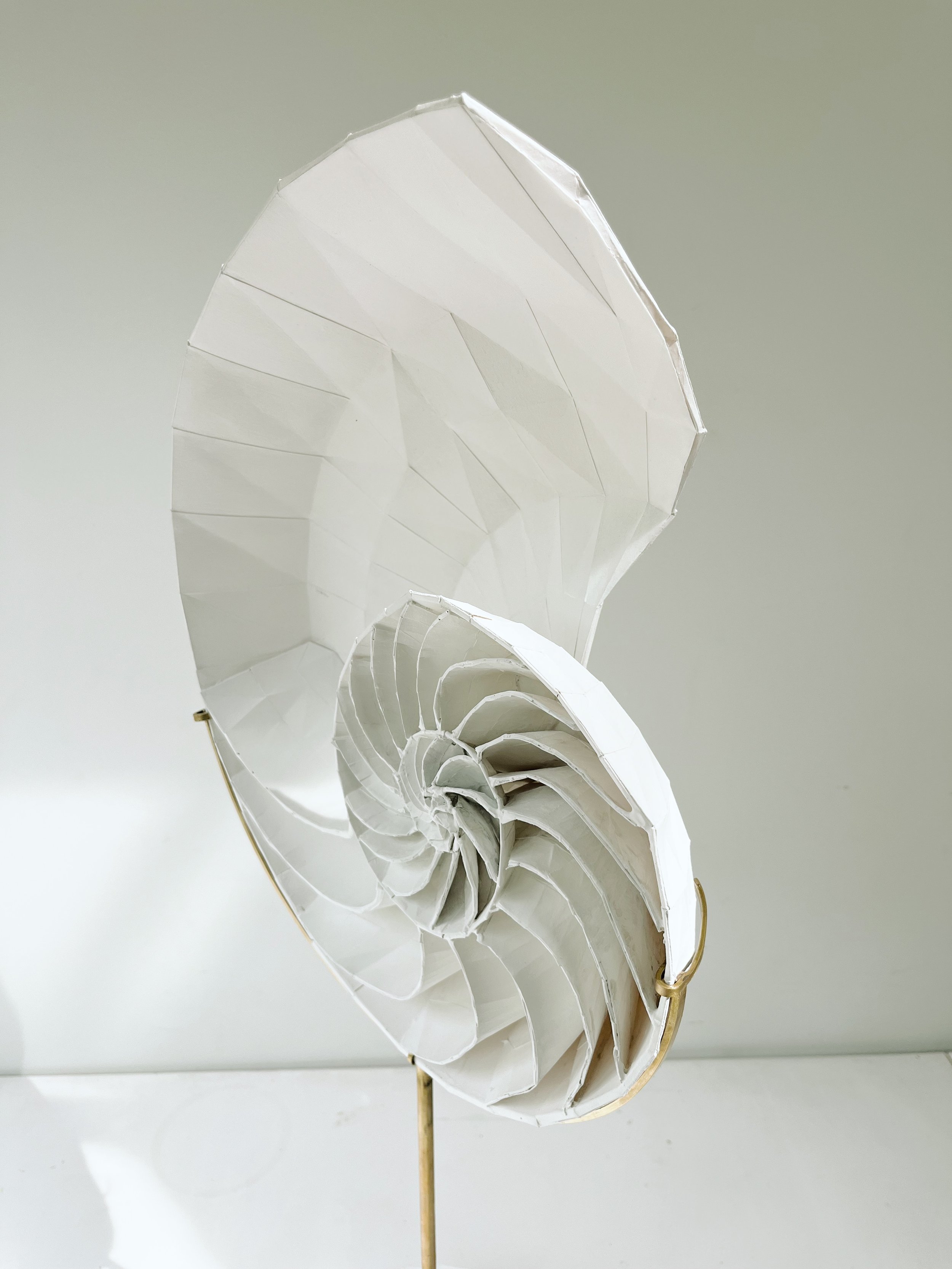
NAUTILUS
(Nautilidae)
A Spiral That Nearly Approaches
the Golden Ratio
The nautilus is a marine animal with a spiral-shaped shell composed of multiple chambers. With each growth phase, the nautilus creates a new chamber and moves forward within the shell. The chambers left behind are sealed off with thin partition walls, known as lamellae or septa. These chambers are then used to regulate buoyancy. This is achieved through a central tube, the siphuncle, which transfers gas and fluid between the chambers. As a result, the nautilus can rise or sink in the water.
The shape of the shell follows a logarithmic spiral, which closely resembles the golden ratio. This is a mathematical proportion frequently found in nature, architecture, and art. The structure of the shell is known for its regularity, symmetry, and structural efficiency.
The nautilus has existed for over 400 million years and has changed very little in that time. For this reason, it is referred to as a living fossil. Despite its successful adaptation to life in the ocean, the species is now under threat, partly due to overfishing for its beautiful shell. As a result, the nautilus is internationally protected.
MATERIAL: paper, epoxy, brass
SIZE: 75 x 33 x 25.5 cm AVAILABLE
frame: Viktor Leestmans




